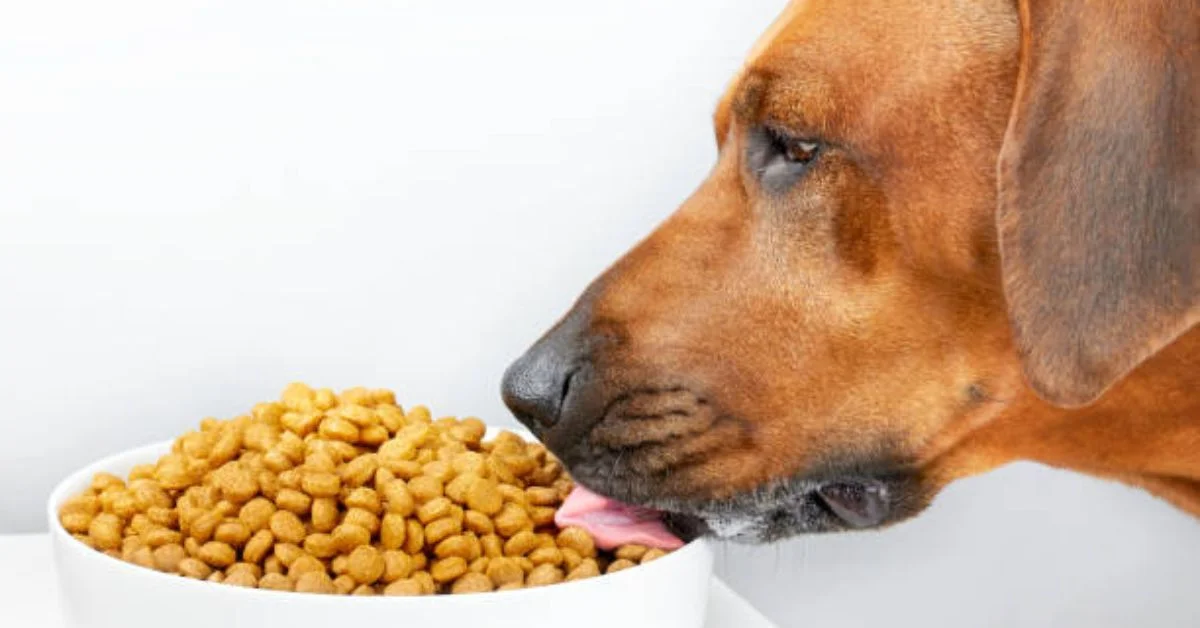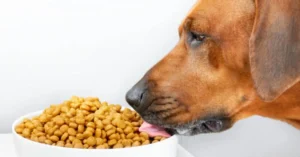Feeding a dog properly is one of the most important responsibilities of ownership, and when it comes to Rhodesian Ridgebacks, nutritional choices are even more crucial. These powerful, athletic, and intelligent dogs were originally bred in Southern Africa as hunting companions capable of endurance, strength, and resilience. Their distinctive ridge of hair along the back makes them instantly recognizable, but what truly sets them apart is their active lifestyle and unique dietary needs. Because of their large, muscular build and high energy levels, Rhodesian Ridgebacks require a carefully balanced diet that promotes sustained energy, joint health, lean muscle development, and overall well-being.
In this article, we will explore in great depth the nutritional requirements of Rhodesian Ridgebacks, recommended food types, feeding practices for different life stages, health concerns linked with diet, and tips for selecting the best dog food. By the end, you will have a comprehensive understanding of how to nourish this breed for optimal health and longevity.
Understanding the Rhodesian Ridgeback’s Nutritional Needs
Every breed has unique dietary requirements shaped by their size, metabolism, genetic predispositions, and level of activity. Rhodesian Ridgebacks are a large-breed dog, generally weighing between 70 to 85 pounds for males and 65 to 75 pounds for females, with a height of up to 27 inches at the shoulder. Their physiology demands nutrient-dense food to fuel their active bodies without leading to excessive weight gain.
Unlike small breeds that burn calories quickly, Ridgebacks have slower metabolism relative to size but require steady energy sources for endurance. Their natural athleticism means that carbohydrates, proteins, and fats must be balanced carefully to avoid obesity while ensuring strong muscles and healthy joints.
Key Nutritional Goals:
- High-Quality Protein: Supports muscle maintenance, repair, and growth.
- Healthy Fats: Provide concentrated energy and promote coat health.
- Complex Carbohydrates: Steady energy release for endurance activities.
- Calcium and Phosphorus: Essential for bone and joint development, especially in puppies.
- Omega-3 and Omega-6 Fatty Acids: Improve skin health and reduce inflammation.
- Glucosamine and Chondroitin: Prevent joint problems common in large breeds.
- Antioxidants and Vitamins: Support immune function and long-term health.
Macronutrient Breakdown for Rhodesian Ridgebacks
To better understand the dietary balance, let us analyze the macronutrient distribution required for this breed.
| Nutrient | Recommended Percentage (Adult Diet) | Importance |
|---|---|---|
| Protein | 22% – 28% | Builds lean muscle, supports immune system |
| Fat | 12% – 18% | Energy source, coat and skin health |
| Carbohydrates | 35% – 45% | Provides fiber and steady energy |
| Fiber | 3% – 5% | Supports digestion and bowel health |
This distribution can be adjusted depending on whether the dog is a puppy, adult, or senior. Puppies and highly active Ridgebacks may require slightly more protein and fat, while seniors benefit from lower fat content and more joint-support supplements.
Life Stage Nutrition for Rhodesian Ridgebacks
1. Puppy Stage (0–18 months)
Puppy Ridgebacks experience rapid growth and need carefully balanced food to avoid skeletal problems such as hip dysplasia and elbow dysplasia. A large-breed puppy formula with controlled calcium and phosphorus is critical. Overfeeding or giving too much protein can accelerate growth unnaturally, leading to long-term bone problems.
- Protein: 24%–28%
- Fat: 14%–18%
- Focus Nutrients: DHA for brain development, calcium-to-phosphorus ratio (1.2:1), glucosamine for early joint support.
2. Adult Stage (18 months–7 years): Rhodesian Ridgebacks
Adult Ridgebacks require food that balances energy with lean body mass. Since they are prone to obesity, portion control and activity-based feeding are essential.
- Protein: 22%–26%
- Fat: 12%–16%
- Focus Nutrients: Omega-3 fatty acids for skin, glucosamine for joints, complex carbs for endurance.
3. Senior Stage (7+ years)
Senior Ridgebacks experience slowed metabolism and may develop arthritis or reduced mobility. Lower-calorie diets enriched with anti-inflammatory nutrients help maintain quality of life.
- Protein: 20%–22%
- Fat: 10%–12%
- Focus Nutrients: Glucosamine, chondroitin, antioxidants, fiber for digestion.
Types of Dog Food Suitable for Rhodesian Ridgebacks
1. Dry Kibble
- Most convenient and widely available.
- Helps reduce tartar buildup on teeth.
- Look for large-breed formulas with balanced nutrients.
2. Wet Canned Food
- Higher moisture content, beneficial for hydration.
- More palatable for picky eaters.
- Should be mixed with kibble for balanced nutrition.
3. Raw Diet (BARF – Biologically Appropriate Raw Food)
- Mimics ancestral diet with raw meat, bones, vegetables, and fruits.
- Can improve coat condition and muscle mass.
- Requires careful planning to avoid nutritional imbalances.
4. Home-Cooked Meals
- Allows customization for allergies and preferences.
- Must be formulated with veterinary nutritionist guidance.
- Risk of deficiencies if not properly balanced.
5. Freeze-Dried and Dehydrated Foods
- Lightweight and retains more nutrients compared to kibble.
- Ideal for owners who want raw-like diets with convenience.
Common Health Issues Related to Diet in Rhodesian Ridgebacks
Rhodesian Ridgebacks are generally healthy, but their large size and genetics predispose them to certain conditions where diet plays a critical role:
- Hip and Elbow Dysplasia: Prevented with controlled growth diets during puppyhood and lifelong joint supplements.
- Obesity: Portion control is essential as Ridgebacks can overeat. Obesity increases risk of diabetes and joint problems.
- Dermatitis and Allergies: Some may develop food sensitivities, often triggered by grains, chicken, or artificial additives.
- Hypothyroidism: Proper diet with iodine and balanced nutrients helps manage metabolic health.
- Bloat (Gastric Dilatation-Volvulus): Common in large deep-chested breeds. Feeding smaller meals and avoiding vigorous exercise after meals can reduce risk.
Feeding Practices for Rhodesian Ridgebacks
Feeding Frequency
- Puppies: 3–4 meals per day.
- Adults: 2 meals per day.
- Seniors: 2 smaller meals with easily digestible food.
Portion Control
Feeding amounts depend on weight, activity, and metabolism. The following table provides approximate guidelines:
| Dog’s Weight (lbs) | Daily Food (Cups of Kibble) |
|---|---|
| 50–60 lbs | 2.5 – 3 cups |
| 60–70 lbs | 3 – 3.5 cups |
| 70–80 lbs | 3.5 – 4 cups |
| 80–90 lbs | 4 – 4.5 cups |
(Values are estimates and should be adjusted based on calorie density of food and activity level.)
Ingredients to Look For in Dog Food
- Primary Animal Protein Source: Chicken, lamb, beef, turkey, salmon.
- Healthy Fats: Fish oil, chicken fat, flaxseed oil.
- Digestible Carbs: Brown rice, sweet potato, oatmeal.
- Fruits and Vegetables: Blueberries, spinach, pumpkin, carrots.
- Supplements: Probiotics, glucosamine, taurine for heart health.
Ingredients to Avoid
- Artificial preservatives like BHA, BHT, Ethoxyquin.
- Excessive fillers such as corn, wheat, soy.
- Meat by-products of unknown origin.
- Excessive salt, sugar, and artificial coloring.
Sample Feeding Chart for a Rhodesian Ridgeback
| Life Stage | Example Meal Components |
|---|---|
| Puppy | Large-breed puppy kibble + salmon oil + pumpkin puree |
| Adult | Chicken & rice kibble + green beans + fish oil |
| Senior | Low-fat kibble + joint supplements + boiled sweet potato |
Tips for Choosing the Best Dog Food
- Read Labels Carefully: Ensure real meat is the first ingredient.
- Consider Breed-Specific Needs: Choose formulas for large, active dogs.
- Check AAFCO Approval: Food should meet nutritional guidelines.
- Rotate Protein Sources: Prevents allergies and maintains interest.
- Consult a Veterinarian: Especially for puppies, seniors, or dogs with health issues.
Future of Canine Nutrition for Large Breeds
Advances in veterinary nutrition are paving the way for customized diets based on DNA testing, activity monitoring, and health history. For Rhodesian Ridgebacks, future diets will likely incorporate personalized nutrient blends to prevent genetic disorders, enhance performance, and extend lifespan. Novel protein sources such as insect-based proteins and plant-based alternatives may also become popular, offering sustainable solutions without compromising health.
Frequently Asked Questions (FAQs): Rhodesian Ridgeback
Q1: How much should I feed my Rhodesian Ridgeback daily?
An adult Ridgeback typically requires 3–4 cups of high-quality kibble daily, split into two meals. The amount varies depending on activity, age, and metabolism.
Q2: Is grain-free food good for Rhodesian Ridgebacks?
Not always. While some dogs with allergies benefit from grain-free diets, others thrive on grains like brown rice and oats. It’s best to assess individually.
Q3: What food helps prevent joint issues in Ridgebacks?
Food containing glucosamine, chondroitin, and omega-3 fatty acids helps maintain joint health and reduces inflammation.
Q4: Can I feed homemade food to my Rhodesian Ridgeback?
Yes, but it must be nutritionally balanced. Work with a veterinary nutritionist to avoid deficiencies.
Q5: How can I prevent bloat in Rhodesian Ridgebacks?
Feed smaller meals throughout the day, avoid vigorous activity right after meals, and use elevated feeding bowls if recommended by a vet.
For more information, click here.









